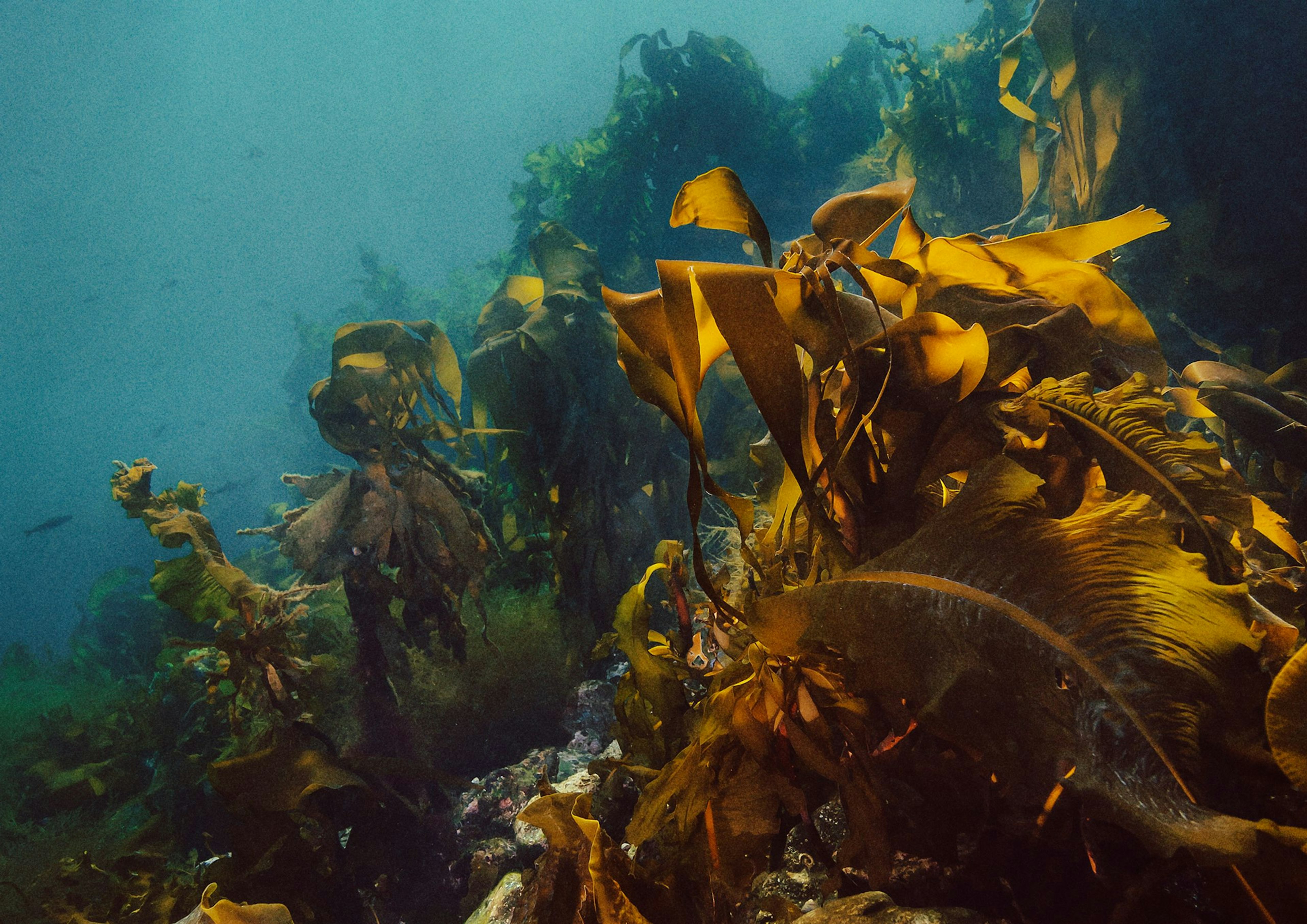
From urchin barrens to kelp forests
Boosting biodiversity through restorative harvesting
Through non-invasive urchin harvesting, Ocean Green is helping to bring back kelp forests, boost biodiversity and find new, commercially-viable uses for sea urchins.
Kelp forests are one of the most diverse ecosystems on earth, boosting biodiversity, protecting our coasts and acting as a carbon sink in the fight against climate change. But these forests are disappearing. In the north of Norway, more than 80% of original kelp forests disappeared over the last 50 years– replaced instead by urchin barrens as a result of the overfishing of natural urchin predators and climate change..
The Ocean Green project is adapting Ava Ocean’s unique non-invasive seabed harvesting technology, to pick urchins . A circular-economy project, these urchins will then go into R&D to find commercially-viable uses for the whole urchin – with zero waste. At the same time, the rehabilitation of kelp forests will bring their own host of benefits, from ocean protection to providing nurseries for commercially important fish to diversified income opportunities for coastal communities currently focused on Northern Lights tourism.
Ocean Green is a cross sector collaboration between partners from top Norwegian research institutions and industry players in fisheries, biotechnology and tourism.

The problem
Overfishing and other human activity around the world has resulted in a huge reduction in the number of fish that eat sea urchins. Allowed to proliferate, these urchins eat the kelp, creating barrens where kelp forests once flourished. As forests – a natural habitat for urchin predators – disappear, a negative loop is established with urchin populations growing even larger.
Kelp is an essential, foundational species and the impact of these barrens is huge: kelp forests act as nurseries for a variety of species, they protect coastlines by absorbing some of the impact of storms and they absorb CO2 at a scale surpassing forests on land, making their rehabilitation key to the climate crisis fight.
Traditionally harvested by hand targeting an exclusive seafood market, the worldwide urchin fishery has dropped from 120.000 tonnes in 1994 to 75.000 tonnes in 2014.

The solution
For restorative harvesting to work, and kelp forests to return, the scale of the urchin catch must increase massively. As well as the near-eradication needed for this to work, increasing the urchin fishery will also make valorisation projects commercially viable. The technology we are developing is a world away from manual harvesting, with an expected catch rate of 768kg per hour. Once caught, sea urchins will be divided into two categories: high-quality urchins suitable for consumption and low-quality for use in a range of products.
Based on a fishery running 240 days a year with an operating time of eight hours per day, the potential revenue is estimated at approximately NOK 8 million. My monetising the catch – and developing a zero-waste value chain using the entire urchin – Ocean Green offers an incentive to growing the global urchin fishery as well as diversified revenue sources for coastal communities.
Featured Articles

Norway’s underwater rainforests: why kelp matters

Introducing “urchin sudoku”: gamification of citizen science

Ocean Green scientists adapting ocean floor mapping to track kelp restoration

Ava Ocean
Project and Technical Lead
Ava Ocean is the project lead for Ocean Green as well as developing the harvesting technology.

Across Nature
Carbon Sequestration
Across Nature is a carbon sequestration project developer fostering value creation opportunities through high-impact carbon removal.

Akvaplan Niva
Research partner
Akvaplan-niva is a not-for profit research institute focusing on water, ocean, and arctic issues.

Hofseth Biocare
Urchin derived product development
Hofseth Biocare is a Norwegian biotech company that offers high-value ingredients and finished products for humans and pets.

NIBIO
Norwegian institute of Bioeconomy Research
NIBIO is one of Norway's largest research institutes working in food safety and security, sustainable resource management, innovation and value creation.

NIVA
Norwegian Institute for Water Research
NIVA is an environmental research organisation which researches, monitors, assesses and studies coastal and marine environments and environmental technology.

Rissa Citizen Science
Rissa citizen science runs all the community outreach projects and urchin citizen science in Tromso as part of Ocean Green.